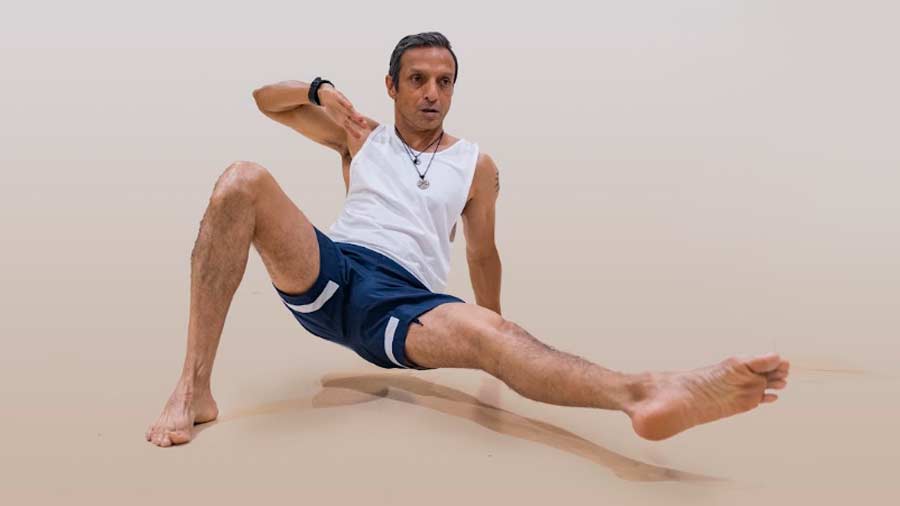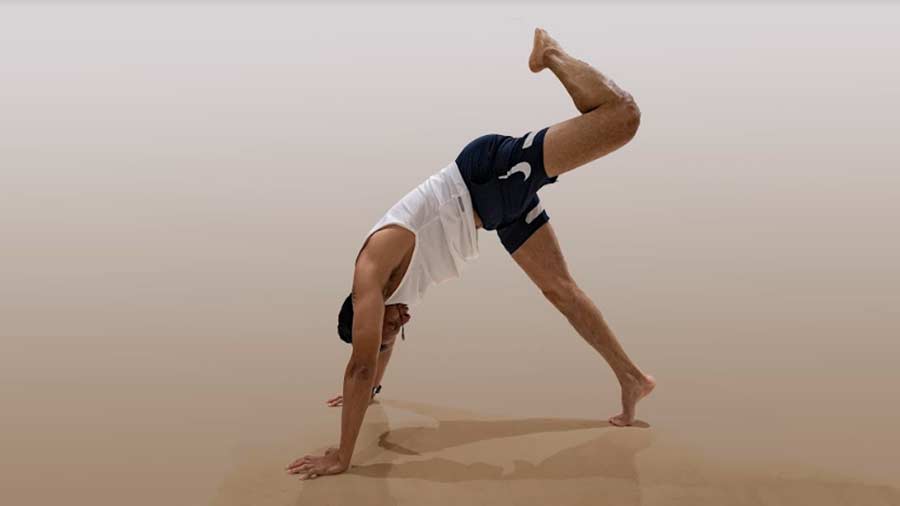Contrary to how our parents might feel about it, it's alright to move like an ape these days. In fact it's even recommended. Yes, Animal Flow, which owes its popularity to US-based fitness educator Mike Fitch, is seeing a resurgence in gyms and personal training. In Kolkata, strength and conditioning coach Ranadeep Moitra has, for years, been incorporating Animal Flow movements in calisthenics, which he describes as the “Big Daddy of Strength Training”.
My Kolkata caught up with him at Endorphins Corrective Exercise Studio on Park Street to channel the beasts we once were.
What is Animal Flow, essentially?
Animal Flow is a series of physical gestures or positions, linked together in a seemingly fluid sequence, so that when you move from one position to another, they’re connected absolutely seamlessly. That’s why it’s a “flow”. It seems like a river flowing, when performed beautifully.
Do the movements imitate the movements of early man?
If you look back at early man, animals inspired them to move in a particular manner. We have a crocodile walk, a crab position, and the beast basically refers to the gorilla. That’s where it comes, from an evolutionary perspective. In Endorphins, we’ve been doing the Bear and Crab walk for years. I don’t trust anything in this physical world which is not at least 100 years old!

Ranadeep Moitra demonstrating a Side Kick Through
So has modern lifestyle taken a toll on our ability to move as we should?
If you look at the movements we do in real life, it’s become very biplanar. But then, when you look at the human skeleton, you’ll see that many joints are built to move in three different planes. A single joint will have a very intricate relationship with other joints through connective tissue, which we call a sling because it connects one joint to the other. The human body cannot be isolated joint-wise or muscle-wise, but moves in this flowing sequence. This explains the rationale behind animal flow.
Is Animal Flow better for strength or flexibility?
It’s not absolutely for strength but many aspects work on body weight. A lot of calisthenics takes over and we say, ‘when strength training stops, calisthenics takes over’. People don’t understand how strong you have to be to handle your body weight in nature and in space, in three different planes. The flexibility comes from the dynamic movements. Flexibility is not a panacea for all evil. Often, working on only flexibility can cause more damage than good. A dynamic movement like Animal Flow is therefore extremely beneficial. Of course, strength is the number one component in physical fitness and Animal Flow is a great exhibition of strength and movement in a perfectly blended sequence.
How can one get started with Animal Flow?
Like any other form of discipline it's not easy to master Animal Flow. While it looks beautiful, it is an amalgamation of many small sequences. To master it, you’ll have to practise every half move or quarter move. In the beginning, you should only practise the small sequences and then go into the flow.

Ranadeep Moitra performing a 'Scorpion'
So it’s a lot like yoga?
Well, many movements here are similar to Ashtanga Yoga. Like any other form of exercise, Animal Flow can be regressed or progressed. The beauty of it is you don’t have to compete with anyone else. It can be regressed to suit you. Like in yoga, you do what your body allows you to do. The benefits are huge because it trains the body in its natural flow and makes it a more efficient moving machine.

